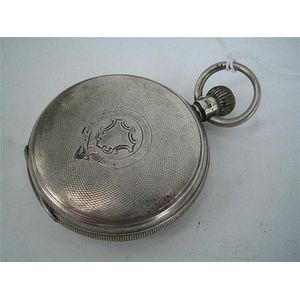The Waltham Watch Company was an American watch manufacturing company that was founded in 1850 in Waltham, Massachusetts. It was the first company to produce watches on a large scale in the United States, and it played a significant role in the development of the American watchmaking industry.
The company was founded by a group of businessmen, including Aaron Dennison, Edward Howard, and David Davis, who wanted to produce high-quality watches at an affordable price. They developed a system of interchangeable parts, which allowed for mass production and made the watches more affordable.
The first Waltham watch was produced
more...
in 1852, and it quickly gained a reputation for quality and accuracy. The company became known for its precision and innovative designs, and it won several awards at international exhibitions.
In the late 19th century, the Waltham Watch Company faced competition from Swiss and British watch manufacturers, who were producing watches at a lower cost. To remain competitive, the company began to focus on producing high-end watches, including chronometers and pocket watches.
During World War I, the Waltham Watch Company produced watches for the U.S. military, and it played a crucial role in supplying the military with accurate and reliable timepieces.
In the early 20th century, the company faced increasing competition from other American watch manufacturers, and it struggled to remain profitable. In 1923, the company merged with the Keystone Watch Case Company to form the Waltham Watch and Clock Company. The new company continued to produce watches until 1957 when it ceased operations due to competition from quartz watches.
less...
Pocket watches were the primary timekeeping device for centuries, with origins dating back to the 16th century. In the early days, pocket watches were large and cumbersome, and only the wealthy elite could afford them. However, over time, advances in technology made them smaller and more accessible to the masses.
The earliest pocket watches were made with a simple mechanism consisting of a mainspring, an escapement, and a balance wheel. The mainspring provided power to the watch, while the escapement regulated the movement of the watch hands, and the balance wheel ensured accuracy. These watches were usually worn around the
more...
neck or carried in a pocket, and they were often adorned with elaborate designs and engravings.
In the 18th century, the pocket watch became more popular, and many watchmakers began to experiment with new designs and mechanisms. One of the most significant developments was the introduction of the lever escapement, which greatly improved the accuracy of the watch. Another important innovation was the use of jewels to reduce friction in the movement, leading to increased durability and reliability.
In the 19th century, pocket watches became smaller and more affordable, and they became an essential accessory for the middle class. During this time, watchmakers also began to experiment with new materials, such as gold and silver, and they created watches with intricate designs and patterns. Many of these watches were also equipped with additional features, such as a calendar, a stopwatch, or a second hand.
The 20th century brought about even more significant changes to the pocket watch. The introduction of quartz technology in the 1970s led to the development of the quartz pocket watch, which used an electronic oscillator instead of a mechanical mechanism. This innovation greatly improved accuracy, and it made pocket watches even more accessible to the masses.
Nowadays pocket watches are mostly used as a fashion accessory or a collector's item. They are often made with intricate designs and high-quality materials, and they are prized for their elegance and beauty. However, with the rise of smartphones and digital watches, the practicality of the pocket watch has diminished. Despite this, the pocket watch remains an iconic symbol of a bygone era, and it continues to be cherished by collectors and enthusiasts around the world.
less...










 Loading more...
Loading more...